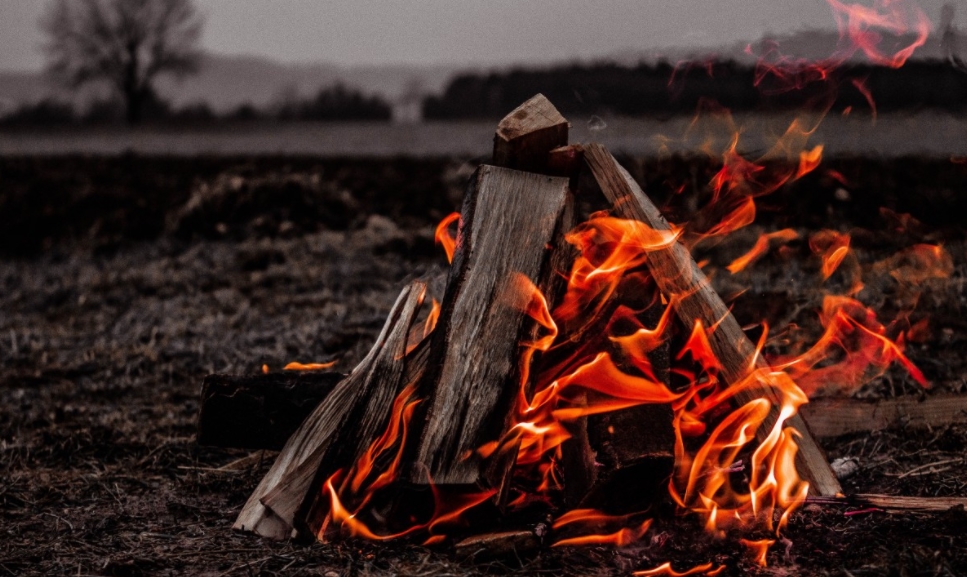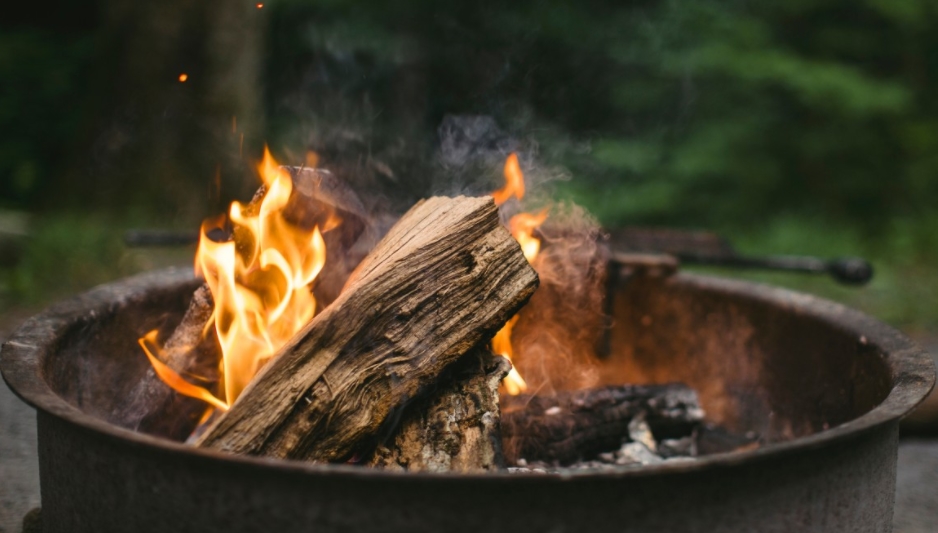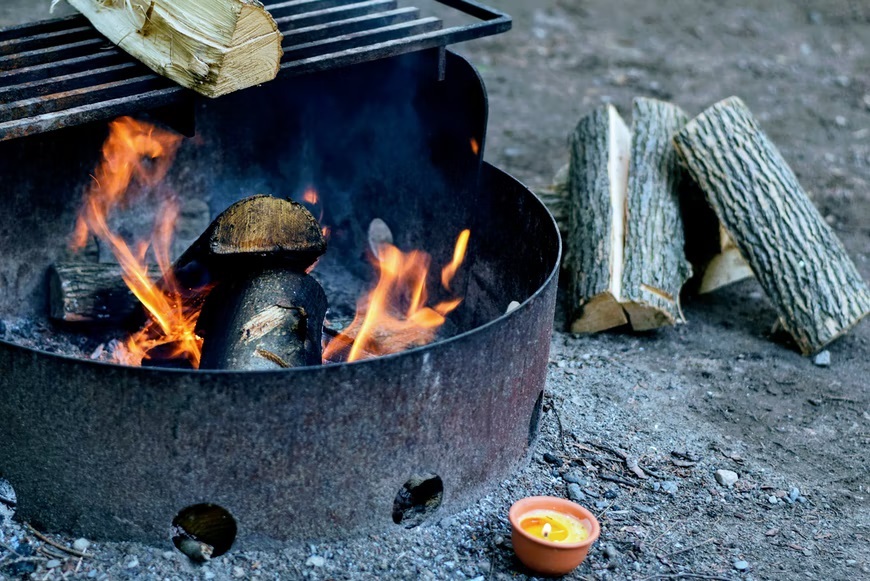Last Updated on February 20, 2023 by admin_hunter
There’s nothing more frustrating than being unable to start a fire at your campsite because of the wood you’ve chosen. You have things you need to do with a fire like cooking food, heating water, or staying warm. Being unable to start a fire because of campfire wood will delay you from starting a fire which can prevent you from cooking or staying warm.
We’re here to make sure you know how to choose the best campfire wood for your campfire so that you can get your fire started in no time.
What is Campfire Wood and Why is it Important?
Campfire wood is what you’ll use to fuel the fire and keep it burning. Campfire wood is larger pieces of wood that catch fire easily and keep your fire burning. Campfire wood should burn slow enough that your fire continues burning without burning up or needing to add more wood to keep the fire burning.
Campfire wood is important because it is what keeps the fire burning. Tinder and kindling are important for starting a fire, but the campfire wood is how the fire continues to burn.
Different Types of Campfire Wood

There are different types of campfire wood you can choose to get your fire started. Different wood can burn differently, making some wood better than others for starting a campfire.
You can bring your own seasoned campfire wood with you to burn or you can gather campfire wood at your campsite or within your campground.
When gathering firewood for your campfire, try to find campfire wood that is dry and at least three inches or more in diameter. This will help your campfire catch on fire and stay on fire.
These are the best types of campfire wood you should choose for your campfire.
Oak
Oak is one of the most commonly used types of campfire wood. Oak is great for campfires because it is thick enough to keep a fire burning and burns hot enough to easily ignite. Oak can dry quickly and become a great seasoned firewood choice for your campfire.
Maple
Another great option for campfire wood is maple. Maple is dense, making it another slow-burning campfire wood that will produce hot heat while also burning slow.
Hickory
Hickory holds little moisture which is a great feature to have for campfire wood. Hickory burns hotter than oak so it can be burned through quickly. Combining hickory with oak or maple in your campfire will help your fire burn slower.
How to Get Your Fire Started
You’ll need to gather the following materials to start your campfire:
- Tinder
- Kindling
- Firewood
- Firestarter
If you have a manmade fire pit, you can assemble the campfire wood within the fire pit; however, if there is no fire pit available, you’ll need to create an area to safely burn your campfire. To build a fire pit, you can take large rocks and position them in a circle to keep your fire contained within the perimeter of the pit.
Assemble the campfire wood in the fire pit. You can assemble the campfire wood using a variety of methods. The teepee method is the most commonly used method for assembling and positioning the campfire wood. Stack the campfire wood vertically so that one end of each piece of campfire wood is touching one another, positioning them in a shape that resembles a teepee.
Once you have positioned your campfire wood, it’s time to place the tinder and kindling within the wood. Place the tinder on the ground in the center of the teepee and then place the kindling on top of it. Light the tinder so that it quickly gets ignited and burns hot. The kindling should easily catch fire and burn hot, catching the campfire wood on fire in the process.
Keep additional campfire wood nearby so that you can continue feeding the fire to keep it burning as needed. The fire will need to be continuously fueled with campfire wood so that it continues burning as needed.
What NOT To Use for Campfire Wood

Not all wood is meant to be burned. There is certain wood that is acceptable to burn and certain wood that you should never burn.
You should never burn freshly cut limbs, trees, or branches. Trees that have been freshly cut are wet and green and will be too wet to burn adequately. This will cause the wood to smoke and not catch fire properly. You can use a lot of time and energy trying to ignite green wood for your campfire. This is why you should always burn dry, dead wood.
You also should never burn manmade wood materials like treated lumber, pallets, or other building materials. These types of manmade wood materials can be treated with toxic chemicals that shouldn’t be burned. Additionally, they can also be treated with chemicals that will prevent them from catching on fire.
If you plan to bring your own firewood for your campfire, check with the park or campground in which you’re camping so that you don’t break any rules for bringing your own campfire wood. Some parks prohibit outside campfire wood from being brought into the park so that foreign insects don’t invade the park. Before you bring your own outside firewood for your campfire, make sure the park you’re camping in will allow you to do so.
Conclusion
Choosing the best campfire wood to get your fire started is important for any camping trip. A campfire will keep you warm, heat your water for cooking, and cook your food. Without a campfire, you can be without heat and food, which can turn your camping trip into an unpleasant experience. Choosing campfire wood like oak, maple, and hickory will cause your fire to burn hot and slow, giving you the best of both worlds for your campfire. Try to stay away from wet or freshly cut wood when choosing campfire wood for your fire.
Campfires can be a great way to enjoy the outdoors and stay warm while camping, but it’s important to be careful with them to prevent wildfires and other accidents. Here are some reasons why you should be careful with campfires:
- Wildfire Risk: Campfires can easily start wildfires, which can spread quickly and cause extensive damage to the environment and property. This is particularly important in dry, windy conditions or in areas prone to wildfires.
- Personal Safety: Campfires can also pose a risk to personal safety, as they can cause burns or injuries if not handled properly. Campers should always keep a safe distance from the fire and avoid wearing loose clothing or synthetic materials that can easily catch fire.
- Environmental Impact: Campfires can have a significant impact on the environment, including damaging tree roots and soil, and disrupting ecosystems. In some areas, campfires may be prohibited or restricted to protect the environment.
- Leave No Trace: As part of the Leave No Trace principles, campers should minimize their impact on the environment and leave the campsite as they found it. This includes properly extinguishing campfires and disposing of ashes and coals in a designated fire pit or appropriate container.
Overall, it’s important to be careful with campfires to prevent wildfires, protect personal safety, minimize environmental impact, and follow Leave No Trace principles. Always check local regulations and guidelines before starting a campfire, and follow proper safety protocols to ensure a safe and enjoyable camping experience.

